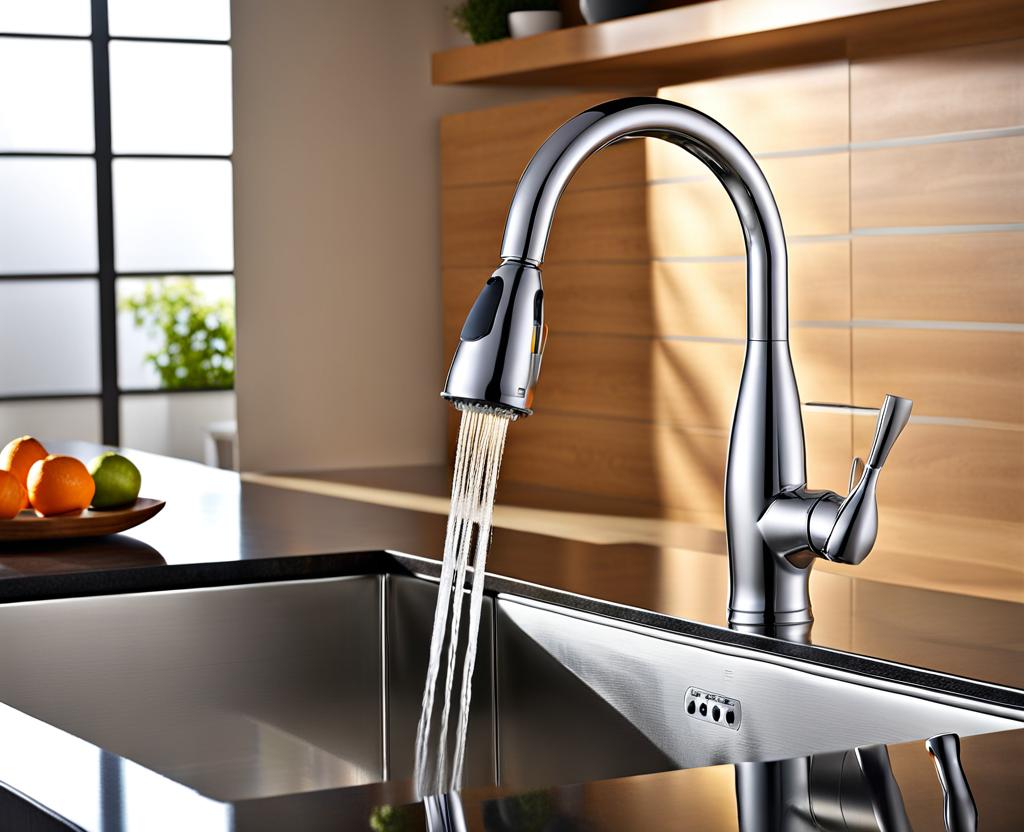Hey there! Upgrading to a low flow kitchen faucet is an eco-friendly choice that’ll save you some serious cash on utility bills. Whether you’re keen on conserving water resources or simply looking to trim expenses, these innovative fixtures offer a win-win solution. Let’s dive into the world of low flow kitchen faucets and explore the endless possibilities!
Exploring Low Flow Kitchen Faucets
Low flow kitchen faucets are designed to optimize water usage without compromising performance. These nifty fixtures regulate the flow rate, typically between 1.5 and 2.2 gallons per minute (GPM), compared to standard faucets that guzzle around 2.2 GPM. By reducing water consumption, you’re not only contributing to environmental conservation but also cutting down on your monthly water bills – a double whammy of awesomeness!
Now, don’t let the “low flow” label fool you – these faucets pack a mighty punch. Manufacturers have stepped up their game, offering a diverse range of styles and features to suit every kitchen aesthetic and functional need. From sleek, modern designs to traditional, rustic vibes, there’s a low flow faucet to complement any decor. Plus, with advanced aerators and pressure-compensating technology, you can enjoy a robust, consistent stream without sacrificing water pressure.
Factors to Consider When Choosing a Low Flow Kitchen Faucet
Selecting the perfect low flow kitchen faucet involves considering several factors. First up, pay attention to the flow rate – aim for faucets with a GPM between 1.5 and 2.2 for optimal water efficiency. Next, assess your kitchen’s layout and plumbing setup to ensure compatibility with the faucet’s design and installation requirements.
Speaking of design, let your personal style shine through! Low flow faucets come in a dazzling array of finishes, from classic chrome and stainless steel to trendy matte black and brushed gold. Consider the overall aesthetic of your kitchen and choose a faucet that seamlessly blends in or makes a bold statement – the choice is yours!

Don’t forget about functionality, either. If you’re a culinary whiz who spends hours prepping and cooking, you might want to opt for a pull-down or pull-out sprayer for added convenience. Hands-free or touch-activated faucets are also a game-changer, especially when you’re elbow-deep in dough or handling raw meat.
Budget Considerations
While low flow faucets may initially cost slightly more than standard models, their long-term savings on water bills make them a worthwhile investment. Plus, many municipalities and utility companies offer rebates or incentives for installing water-efficient fixtures, further offsetting the upfront cost. It’s a win-win situation – you save money while doing your part for the environment!
Top Rated Low Flow Kitchen Faucet Models
Now that you know what to look for, let’s explore some top-rated low flow kitchen faucet models that’ll have you saying, “Shut the front door!” (in a good way, of course).
For those who dig the sleek, contemporary vibe, the Moen Arbor MotionSense Wave is a showstopper. This hands-free, pull-down faucet boasts a 1.5 GPM flow rate and a fancy sensor that detects your hand movements, allowing you to turn the water on and off with a simple wave. Talk about futuristic convenience!
If you’re a fan of traditional, farmhouse-inspired designs, the Kohler Simplicite is sure to steal your heart. With a 1.5 GPM flow rate and a high-arc swivel spout, this two-handle faucet offers both beauty and functionality. Plus, it’s available in a range of gorgeous finishes, including vibrant colors like grayed sage and ombre blue – perfect for adding a pop of personality to your kitchen.
Installation and Maintenance of Low Flow Kitchen Faucets
Installing a low flow kitchen faucet is a breeze, especially if you follow the manufacturer’s instructions to a tee. Most faucets come with all the necessary hardware and tools, making the process a DIY-friendly endeavor. However, if you’re feeling a bit intimidated or unsure, don’t hesitate to enlist the help of a professional plumber – it’s always better to be safe than sorry, especially when it comes to plumbing projects.
Once your shiny new faucet is up and running, maintaining it is a piece of cake. Regular cleaning with mild soap and water will keep it looking spick and span. For stubborn mineral buildup or limescale, use a gentle, non-abrasive cleaner specifically designed for your faucet’s finish. Avoid harsh chemicals or abrasive scrubbing pads, as they can damage the surface and dull the finish over time.
While low flow kitchen faucets are a fantastic water-saving solution, there are additional steps you can take to maximize water efficiency in your kitchen:
- Install aerators on all your faucets to reduce water flow without sacrificing pressure.
- Fix any leaks promptly – a single dripping faucet can waste gallons of water per day.
- Upgrade to energy-efficient appliances, such as dishwashers and washing machines that use less water.
- Opt for a low-flow pre-rinse spray valve when washing dishes by hand.
- Be mindful of your water usage – turn off the faucet when brushing teeth or scrubbing vegetables.
By combining these practices with a low flow kitchen faucet, you’ll be well on your way to conserving water and reducing your environmental impact (not to mention your utility bills!). It’s a win-win-win situation, my friend!

This is where you’ll find inspiration to create a stylish and beautiful dream home.